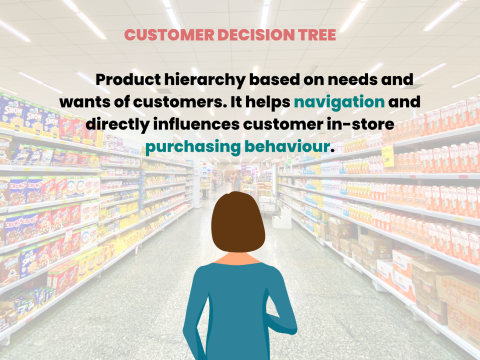-
-

In-Store Customer Decision Making
-Customer decision tree is a powerful tool for retailers. It allows them to better understand customer behaviour and optimize the shopping experience. Machine learning can inform the proccess with striking new capacities, but there is also a trap. Past data must be complemented with creative insights.
By combining machine learning with creative input, retailers can reach new levels of assortment optimizations, store layouts innovation and overall customer satisfaction. -

Modes of Shopping Behaviour
-As a consultant I usually ask my clients about their customers. “Who are your customers?” It’s not unusual to get…
-

Category management ne prime več – in sedaj?
-Daljnega 2019. sem na konferenci Prodaja na policah spregovoril o tem, da category management, kakor smo ga poznali v zadnjih…
-

Successful Retail Store Spaces In 5 Steps
-FIRST PUBLISHED: MAR 17, 2021 — LATEST MAJOR UPDATE: MAY 15, 2023 Floor space management or organization of product categories…
-

Planograms Meet Inventory Management
-— THE CORE OF RETAIL Let’s start with the basic question. What is a physical store? A possible answer: a place…
-

Decrease Inventory Level by 50%, Increase Store Sales & Profitability
-Inventory levels should reflect customer shopping behaviour and expectations. The article shows how a retailer can leverage tactical shelf space allocation for lower inventory levels and higher retail sales. Recent remodeling supports our hypotheses which are part of the Omnibus #leverages space management system.
-

Efficient Retail Floor Space Management 2.0 (Macroplanning)
-The way retailers organize and arrange product categories within their floor space crucially impacts customer shopping behaviour.
In 2022, a commisioned project gave us opportunity to test bolder hypotheses for store layouts. We combined data science & workshops specially designed for store remodeling.
Result? The pilot grocery store became the most rapidly growing grocery store in the whole network of our partner retailer.
-

#vzvodi za prepričljive prodajne prostore
-PROSTORSKI VZVODI ZA PREPRIČLJIVE IN USPEŠNE PRODAJNE PROSTORE Uspešno upravljanje s prodajnim prostorom je eden od ključev uspeha vsakega prodajnega…
-

Generacije – povezane inovacije in optimizacije
-Letnik 1974. Večno mlad. Golf. Zgornji slajd je vzet iz Omnibus predavanja na temo razvoja novih produktov za množično uporabo.…
-

Category management ne prime več – in sedaj?
-Lani sem na konferenci Prodaja na policah spregovoril o tem, da category management, kakor smo ga poznali v zadnjih tridesetih…
-

Okretni category management – Cat Man 2.0
-Category management je v 1990. postal sijoča zvezda na področju trgovine. Trgovec, ki je želel z enim zamahom izboljšati učinek…
-

Pilot Store As a Leverage for Efficient Space Management
-What is efficient store space management? Books and countless presentations in the retail environment have been written about this. Let’s…



